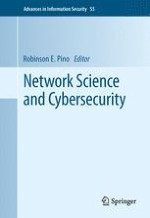2014 | OriginalPaper | Buchkapitel
Machine Learning Applied to Cyber Operations
verfasst von : Misty Blowers, Jonathan Williams
Erschienen in: Network Science and Cybersecurity
Verlag: Springer New York
Aktivieren Sie unsere intelligente Suche, um passende Fachinhalte oder Patente zu finden.
Wählen Sie Textabschnitte aus um mit Künstlicher Intelligenz passenden Patente zu finden. powered by
Markieren Sie Textabschnitte, um KI-gestützt weitere passende Inhalte zu finden. powered by
